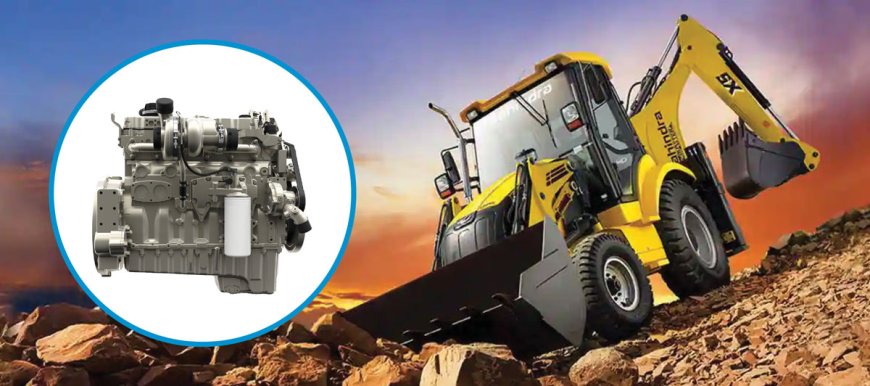Absolute POWER!
Off-highway vehicle engines growth is dependent on the growth rate of agricultural and construction machinery industries. Rising agriculture mechanization trend in developing countries and spike in residential and commercial construction projects globally are driving the construction machinery engine markets. Equipment

Off-highway vehicle engines growth is dependent on the growth rate of agricultural and construction machinery industries. Rising agriculture mechanization trend in developing countries and spike in residential and commercial construction projects globally are driving the construction machinery engine markets. Equipment Times delves into the market, electric drivelines, emission regulations, design changes, after-treatment solutions, major challenges, opportunities and growth prospects in the off-highway engine market.
Increase in demand and production of off-road vehicles is projected to boost the off-highway engine market during the forecast period. Demand for all-terrain vehicles (ATVs) is increasing due to their suitability for activities such as trekking and travelling in the exploration area. Moreover, a rise in automation in various industries such as agriculture, construction, mining, infrastructure and others has increased the use of off-road vehicles in these sectors.
However, high cost and maintenance expenditure are anticipated to significantly restrain the off-highway engine market. Regulatory bodies are imposing rigorous norms globally to reduce carbon emissions from automobiles. Off-highway Engines can be modified to reduce carbon emissions from vehicles. This is estimated to drive the off-highway engine market.
At the global level, the construction is anticipated to be one of the most profitable sectors over the next decade. The recovery of Europe’s construction industry improved business in the mining and quarrying sectors, and a favorable economic environment with low-interest rates likely to further stimulate investments into the market. Extensive modernization of agriculture by incorporating mechanization of farming practices is primarily to drive demand for off-highway engines across Asia-pacific during the forecast period.
Market Dynamics:
The increasing mechanization in agriculture across the globe is one of the prime driving factors of the off-highway vehicle engines market. Mechanization is the process whereby equipment, machinery, and implements are utilized to boost agricultural and food production.
The ever-increasing need and demand for food have resulted in increased penetration of mechanical equipment within agriculture such as tractors, harvesters, and crop sprayers. Moreover, growing demand from developed countries has also provided necessary support to the off-highway vehicle engines market.
Further, the Association of Equipment Manufacturers, US has expected a reliable forecast about agriculture vehicle sales and is anticipated to reach 246.3 thousand vehicles by the end of 2020.
However, the engines also need proper maintenance constantly which is quite costly. Further, the massive investments and high manufacturing costs required for the manufacturing of the engine would hamper the growth of the market.
Market Segmentation:
The global Off-Highway Vehicle Engine market is segmented by the power output of the engine and the fuel type.By the power output of the engine, the market is segmented into less than 100 HP, 101-200 HP, 201-400 HP, and more than 400 HP engines.
By the fuel type, the market is segmented into gasoline, diesel, and others. The others category consists of liquefied petroleum gas and biofuels such as ethanol. Diesel engines hold the majority of the market share is owing to increased efficiency and low cost of diesel compared to gasoline.
Gasoline engines are typically 30% efficient while diesel engines can convert over 45% of the fuel energy into mechanical energy. Diesel engines provide a unique combination of power, performance, reliability, fuel efficiency and now low emissions, it is the technology of choice and the workhorse of the construction sector, powering more than 75 percent of all heavy construction equipment across the globe.
Emission Norms…
The new emission standards in the construction industry when implemented will boost exports to more mature markets such as Europe and North America from India, according to a top industry executive.
The BS (CEV/Trem) V standards, starting from April 1, 2024, cover a wider range of engines, including those smaller than 8 kW and those larger than 560 kW, and introduce PN (particular number) limits for those engines with rated power between 19 and 560 kW.
Technology…
The diesel engine sector has been one of the most active and innovative areas for technological development in the past 10 years. Engine firms have invested enormous sums in developing new, low emissions technologies that reduce the quantities of nitrous oxide and particulates from the tailpipe. All the firms have taken a different approach in this regard, using various combinations of the technologies available such as diesel particulate filters (DPF), selective catalytic reduction (SCR), exhaust gas regeneration (EGR) and high-pressure, common rail fuel systems.
Hits: 1








